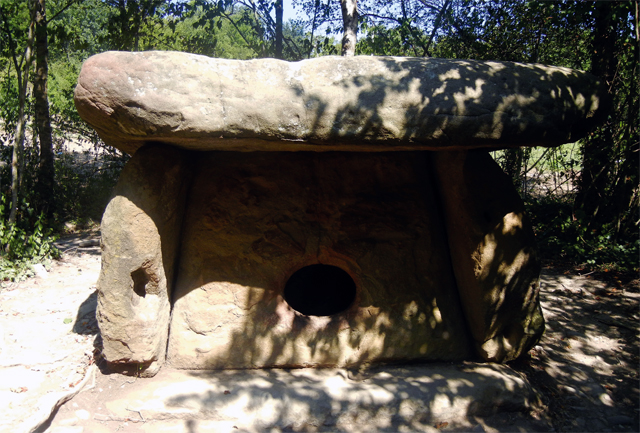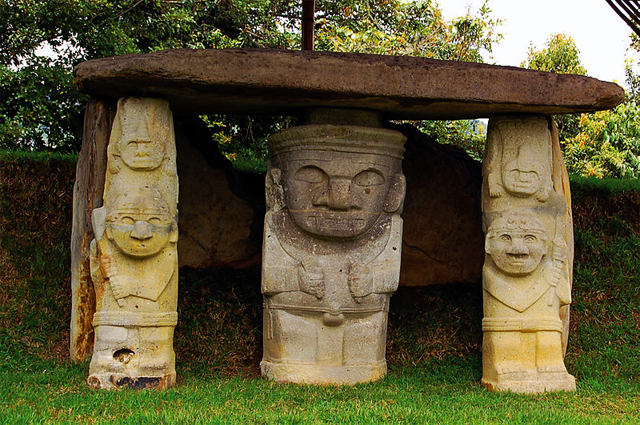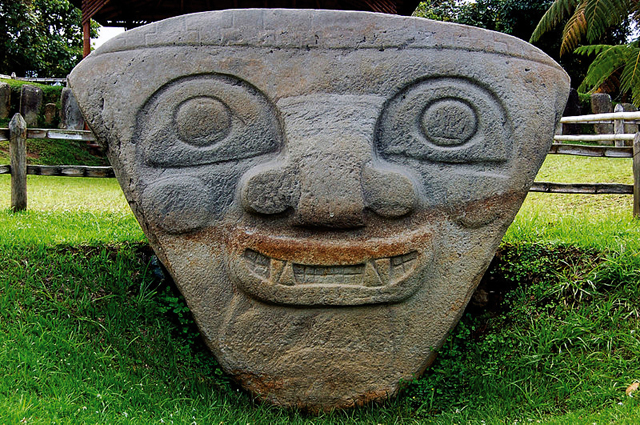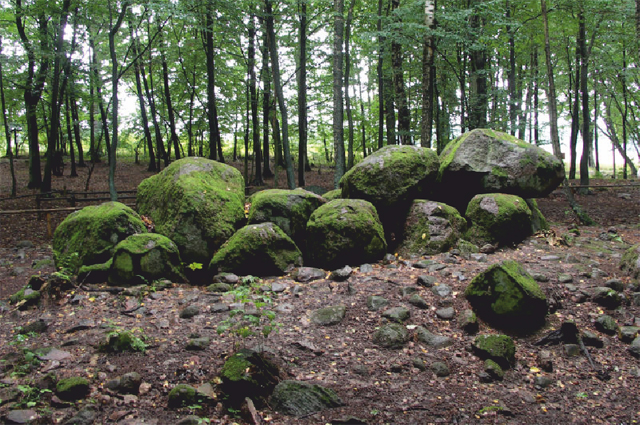MEGALITHIC SITES – DOLMENS

In the previous issue of Kurier Kamieniarski, I wrote about stone circles, also known as cromlechs. In this issue, we look at another type of megalithic structure – the dolmens. In search of them, we will move, among others, to a locality we have visited many times, to South America.
All right. Dolmens. What does that mean, actually?
Simply put, they are stone tombs mostly from the early Neolithic age. They are made up of two or more vertical boulders on which there rests a flattened block of rock. Well, the whole structure resembles a stone table and – interestingly – this is also the literal meaning of the word dolmen, which (like cromlech) comes from the Celtic language.
Many dolmens were originally covered with earth, creating a kind of a burial mound. Today, hundreds and thousands of years later, we can only see the skeletons of the original buildings. The oldest surviving dolmens are about 7,000 years old and can be found in Eastern Europe. However, structures of this type are located all over the world and can be found on most continents. Dolmens of very similar shapes can be admired in Ireland, India, South Korea, Spain, France … And one could carry on listing names of countries for long.
There are dolmens in Poland, too. One of the most famous, sometimes referred to as the Giant’s Tomb, is located near Borkowo in the West Pomeranian Voivodeship. Once there was another tomb nearby which had been completely dismantled by treasure hunters at the end of the 19th century. All they found, however, were flint tools and some amber ornaments, which discouraged them from further searching and probably saved the second dolman. Archaeologists estimate the time of its origin at around 3,000 years BC.
And now, in search of dolmens, let’s set out for Colombia, more specifically for San Augustín Archaeological Park. It is considered the largest necropolis in the world and in 1995 it was included in the UNESCO World Heritage List. In addition to amazing sculptures of various ages and sizes, we can also come across dolmens that resemble the ones we know from Europe. What’s more, using radiocarbon dating, scientists proved that they were formed in exactly the same period, i.e. between 3,500 and 3,000 BC. There are also much younger dolmens in San Augustín, which performed a ceremonial rather than a burial function. They are smaller than their older companions, and the role of vertical stones supporting the finial is played by carved statues.
San Augustín is not only dolmens, but most of all sculptures. They depict deities, animals and monsters, but most of them are statues of priests and warriors with catlike features, also noticeable in the sculptures of other cultures, for example the Olmecs. And since we are at the Olmecs, stone heads can also be found in San Augustín, though maybe not as big and dangerous as those we know from Mexico.
Now, let’s take a moment trip to the Eastern Caucasus for change. There are, of course, dolmens there as well, though quite unusual ones. Dolmens from the Caucasus area are comparable in age to other European and Asian megalithic sites, but their structure is more sophisticated. Most of them are tightly built-up and have an opening in one of the walls. It is fascinating that many of these holes are in the shape of a perfect circle. Until now, we do not know exactly what their function was.
The precision of workmanship with some Caucasian dolmens is also admirable, in which the perfect angle of 90 degrees has been kept, and in the gaps between the stones it is impossible to stick even the tip of a knife. Not to mention even the perfect shaped circles carved out from thick rock.
Perhaps we will find the answers to our questions concerning the dolmens one day, but for now these megalithic structures remain to stay silent, not eager to reveal their secrets to us.



Source: Kurier kamieniarski
Author: Jakub Zdańkowski | Published: 3.11. 2016
